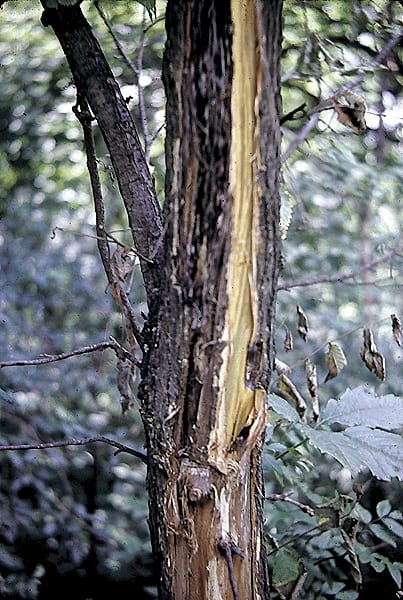DUTCH ELM DISEASE.
Ophistoma ulmi (Ceratocystis ulmi) (fungus)
Spread by Vectors that are native and European Elm Bark Beetles.
All native Ulmus (Elm) species: European and Asiatic elms and Zelkova moderately resistant; cultivars of U. carpinofolia resistant are at risk almost anywhere elms grow in north America.
Contributors are elm bark beetles; drought, malnutrition, construction impact; elm firewood or slash, infected elms within 700 feet; climbing spurs.
Watch for yellowing and wilting of terminal leaves in late spring; browning and premature dropping. Twigs tend to turn inward (“shepherd’s crook”). Twig crotches notched by beetle entry. Late spring infection with terminal foliar tufts and sparse leafing; meager chlorotic foliage next spring. Spreads rapidly, one branch at a time. This kills tree by end of summer; larger trees may survive several years. Mid-summer infection shows on a few branches, becoming severe the next year. Late summer infection stable until next spring, or tree may be free from symptoms next year. Sapwood of infected branches streaked tan or brown. Beetle galleries under bark of larger branches and stems of dying trees. Root graft infection likely where driplines meet, followed by rapid wilting uniformly distributed around crown. Positive identification only by culturing the fungus pathogen in the laboratory.
Overwintering occurs in infected trees, logs, or stumps. Fungus carried by elm bark beetles laying eggs in dying elms; hatch in late fall; larvae tunnel under bark. Larvae develop into pupae the next spring, emerging as adults. Spores in larval galleries sticky, collecting on emerging beetles. Sometimes 3 generations annually. Transmission also through root grafts.


